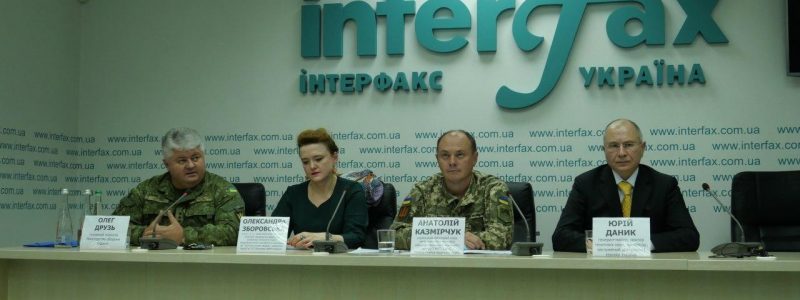
Ukrainian scientists hope to continue testing the method of early instrumental diagnostics of post-traumatic stress disorder (PTSD) by ophthalmic biomarkers – specific eye movements.
“The results obtained confirmed the hypothesis of scientists about the presence of certain abnormal changes in the diameter of the pupils and eye movements in patients with PTSD in response to the applied stimuli, the possibility of its diagnosis by these signs and, accordingly, prevention,” head of the department of inflammatory eye pathologies and microsurgical treatment of the Filatov Institute of Eye Diseases and Tissue Therapy, Oleksandra Zborovska, said at a press conference at Interfax-Ukraine.
She stressed that Ukrainian ophthalmologists began to study the possibility of diagnostics based on ophthalmological indicators in 2012, and in 2018 clinical studies of a new method of objective hardware diagnostics of PTSD were carried out.
These studies included ophthalmologic examination of patients with established PTSD and controls for a number of indicators. The study revealed a number of typical diagnostic signs inherent in people with PTSD.
“We are the first in the world to work on PTSD with the Eye-tracker. To continue our work, we need an Eye-tracker – until now it was provided for research by third parties, as well as participation in research of non-ophthalmological specialists – psychologists, psychiatrists, as well as the involvement of enough non-ophthalmic patient participants with an established diagnosis and participants for a control group,” she said.
Zborovska noted that the ophthalmological part of the method was patented, a declarative patent of Ukraine was obtained. At the same time, a similar study by British scientists, widely covered in the media, was carried out six to seven years after the discovery of Ukrainian scientists.
“An international patent is a very costly business. We planned to get involved in obtaining an international patent so that there would be no such thing that our developments would be stolen from us – the problem of academic integrity is urgent all over the world,” she said.
According to the chief psychiatrist of the Ministry of Defense, Oleh Druz, currently “100% of the servicemen who are in the east are under the influence of psycho-traumatic factors.” At the same time, since 2015, military doctors have been observing these changes, developing protocols for their treatment and detection.
“Now specialists in psychiatry and ophthalmology have joined forces and with the help of instrumental studies on ophthalmological signs with a 98% probability can predict the likelihood of developing PTSD and prevent it,” he said.
Druz noted that over the past five years for this development “there are two patents, several articles have been written in scientific journals, there are articles in the Scopus database, articles in foreign journals where we covered the problems of PTSD.”
“There are sad statistics when military personnel commit suicide, commit crimes, go to jail, lead an immoral lifestyle. Thanks to the timely preventive diagnosis of PTSD, we can prevent this,” he said.
The head of the Main Military Clinical Hospital of the Ministry of Defense, Anatoliy Kazmiruk, in turn, noted that at present there is no corresponding state program providing for the use of methods for early diagnosis of PTSD by ophthalmological indicators.
“We hope that the NSDC will be interested in the results of our work. Applying this technique, we managed to almost threefold reduce the treatment time for patients with PTSD. If in 2014-2015, the bulk of patients with PTSD or with suspected PTSD were treated for at least 60 days and actually fell out from an active professional life for three to four months, then with the use of this method, the duration of treatment can be reduced to 22-25 days, almost threefold,” he said.
According to Major General, Doctor of Technical Sciences Yuriy Danyk, “the research has been carried out so far as an initiative development, but the authors have done everything that is needed to describe and publish it in the relevant scientific editions.”
He also said that the authors of the development have applied to participate in the innovative platform Sikorsky Challenge.
“Development continues on the basis of Sikorsky Challenge, we hope to receive funding from investors who are interested in this development, I think that there will also be government attention,” he said.
Danyk noted that ophthalmic stress diagnostics can be used to assess the impact of stress due to the COVID-19 pandemic.